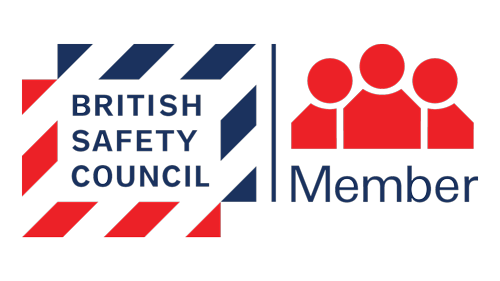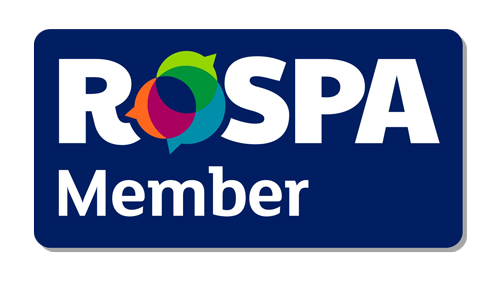Introduction
What is the issue, why is this even being Raised 30 odd years after the standard was superseded! The fact is that the BS3871 MCB we have used for decades was never designed or tested to ensure that it had a positive air gap with adequate clearance distances to prevent break down of the contact, it simply didn’t form part of the requirements of BS 3871.
There are however thousands of BS3871 MCB devices still in service throughout the UK.
In electrical functionality terms the BS3871 MBC is perfectly functional, and if the circuit was correctly designed in accordance with the, then current Wiring Regulations, the devices should function compliantly in the event of both short circuit and overload protection.
It is debatable if BS3871 MCB’s should even be noted as a C3 or not on an Electrical Installation Condition Report “EICR”, with advice on this varying across the industry, with some authorities advising it should and others stating it doesn’t need to be. The BS 3871 standard was replaced by the BS EN 60898 standard. Whilst these older circuit breakers are obsolete, they are fully acceptable to remain in service.
What is the issue?
The IET Wiring Regulations BS7671 provide guidance as to what is and is not an acceptable device for use as emergency switching, functional switching & Isolation. In BS7671:2018 amendment 2:2022 as table 537.4. These tables provide guidance on all current compliant devices, however the table does not make any reference to BS3871 as being an acceptable device. BS7671 goes on to state:
537.2.1 “Devices for isolation shall be of a type for which the isolation function is explicitly recognised by the relevant product standard or as identified in Table 537.4”.
But this is industry best practice, the ACOP’S, guidance, what do the HSE and legislation state?
What do the Health & Safety Executive advise?
If you search for BS 3871 across the HSE’s web site nothing is mentioned with the exception for referring, you to:
Electrical Safety First – Best Practice Guide 2 (Issue 4) (Page12), which states:
“Miniature circuit-breakers (MCBs) manufactured to earlier standards (such as BS 3871) are unlikely to be suitable for isolation.”
Further reference on this issue can be found within the manufacturer’s guide issued by Beama:
Beama Guide to Low Voltage Circuit – Breaker Standards (March 22) (Page 9)
3.2.2. Isolation
“Circuit-breakers conforming to BS EN 60898 series are suitable for isolation. However, the earlier standard BS 3871 did not contain verification or marking requirements for isolation. Therefore, unless the manufacturer applied additional constructional requirements to BS 3871 circuit-breakers, these cannot be assumed to be suitable for isolation.”
What does current legislation say?
Electricity at Works Regulations 1989, Regulation 12 (1)(b) Suitable means of isolation
GN187 The suitable means of isolation of equipment should:
a) have the capability to positively establish an air gap or other effective dielectric which, together with adequate creepage and clearance distances, will ensure that there is no likely way in which the isolation gap can fail electrically;
GN188 Selection of Isolation Switches:
Isolator switches (or disconnectors) will often be used as the means of disconnection and securing separation from the supply. When selecting appropriate equipment, consider:
a) The isolating distances between contacts or other means of isolation which should meet an
appropriate standard or be otherwise equally effective;
Are the HSE actively looking for this when they undertake an Inspection?
Extract from a Client HSE Intervention 2023, Issued by an HM Electrical Inspector
“Action XXXXXXXX– Electrical Power Systems – Safe Systems of Work Procedure(s) / documentation reviewed did not provide suitable and sufficient demonstration of the way in which the Company achieves compliance with applicable regulations and relevant benchmark standards in relation to safe systems of work associated with the LV electrical distribution systems.
XXXXX should:
Review and updated as required, the relevant Company procedures/documentation to ensure alignment with the requirements of applicable regulation and relevant benchmark standards in relation to the safe operation / safe systems of work on LV electrical distribution systems. As a minimum, the following safety significant items should be addressed.
vii) The method of isolation on older style devices (e.g. MCB conforming to earlier standards such as BS 3871[R32] without sufficient isolation gap, refer to ESC – Best Practice Guide 2 (Issue 3) [R24].”
Summary
It can clearly be seen from the above guidance, legislation, and current enforcement action via the HSE that BS3871 MCB’s are not considered as a suitable means of Isolation, unless you have proof from the manufacturer that under BS3871 they took extra measures to test for this, ensuring a positive air gap that could be proven not to break down! To my knowledge no such further evidence has been provide by manufacturers to confirm this.
How do we identify BS3871 MCB’s
The only way to positively identify BS3871 MCB’s is by the references printed or engraved usually into the side body of the MCB. Clearly in a populated distribution board this is still not visible and the only way of ensuring that these devices can be checked is by conducting an intrusive survey of the board.
To ensure that this work does not contravene the requirements of the Electricity at Work Regulations 1989, Regulation 14 work on or near live conductors, the distribution board will require isolation prior to conducting an intrusive survey.
There are however a few pointers that can help identify if the device is either manufactured to BS3871 or BS EN 60898. BS3871 MCB’s were available with tripping characteristic Type 1 to 4 or T1 to T4, and as an indication only, in most cases on the face of the breaker you will be able to see T1, T2 or T3, this will positively identify that the device is manufactured to BS3871. Whereas MCB’s manufactured to BS EN 60898 have tripping characteristics Type A to Type D.
Older BS3871 breakers also stated the rated breaking capacity as 3 or M3 for 3KA, whereas BS EN 60898 tend to state 6 or 6000 for KA, but this is only an indication, again some later BS3871 MCB’s were manufactured with Type B, C or D tripping characteristics also.
There are exceptions to the rule as certain miniature circuit breakers manufactured to BS3871 such as the Crabtree C50 range have no markings other than the braker rating on the face. (In white for 3KA & Yellow for 4.5KA).
To further complicate matters some manufacturers such as Crabtree & MEM (there are others) manufactured the same frame / body of MCB to both BS3871 & BS EN 60898, meaning you could have a distribution board populated with a mix of MCB’s, some that can be used safely as a point of isolation as manufactured to BS EN 60898 and some that cannot as they are manufactured to BS3871. Again, the only way to be certain would be to conduct an intrusive survey as described in the opening paragraph above.


Further information & Reading
https://professional-electrician.com/technical/legacy-circuit-breakers-value/
https://www.electricalsafetyfirst.org.uk/media/1201/best-practice-guide-2-issue-3.pdf
BS7671 IET Wiring Regulations 2018+A2:2022
IET Guidance Note 2 Isolation & Switching






